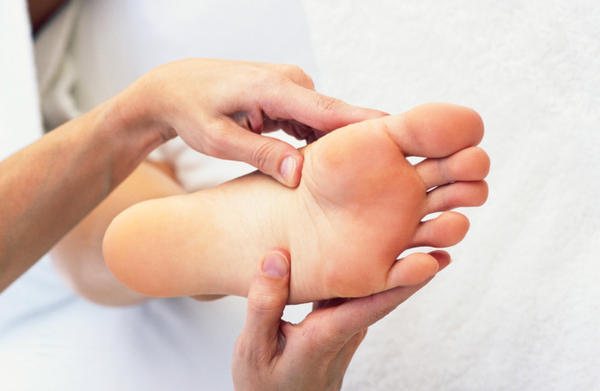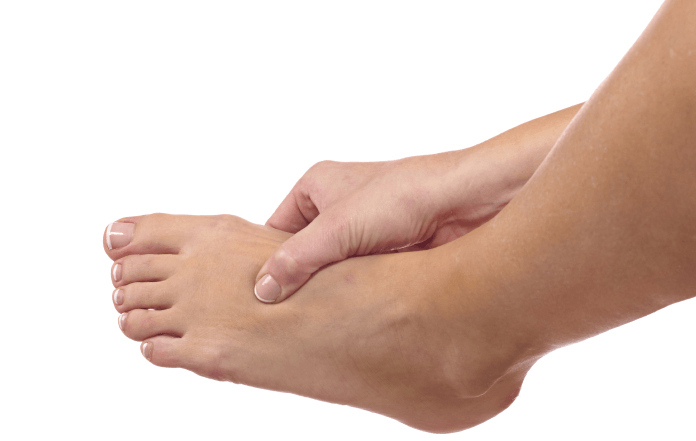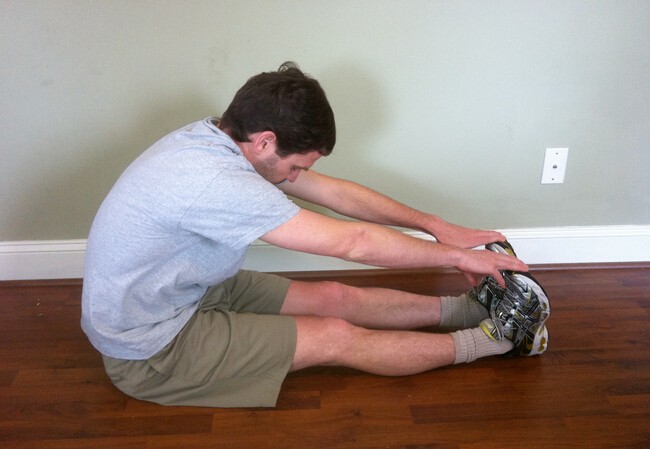Foot arch pain is a common problem that affects many individuals. It can be debilitating and significantly impact your quality of life. Understanding the causes of foot arch pain is crucial for effective management and treatment. This article will explore the 12 most common causes of foot arch pain with some best treatments and exercises.
What is a foot arch?
The foot arch refers to the curved structure on the bottom (plantar side) of the foot that spans from the heel to the ball of the foot. It is formed by the bones, ligaments, and tendons in the middle of the foot. The arch provides support, stability, and shock absorption during weight-bearing activities like standing, walking, and running.
Symptoms of Foot Arch Pain
Here are some common symptoms associated with foot arch pain:
- Arch soreness: You may experience aching or soreness in the arch area of your foot. This discomfort can range from mild to severe.
- Arch tenderness: The arch of your foot may feel tender to the touch. Applying pressure to the area may exacerbate the pain.
- Pain while standing or walking: Foot arch pain often becomes more noticeable when you stand or walk for extended periods. The pain may worsen with increased activity.
- Stiffness or limited range of motion: You may experience stiffness in the arch of your foot, making it challenging to flex or move the foot freely.
- Changes in foot posture: Arch pain can lead to changes in foot posture, such as overpronation (excessive inward rolling of the foot) or a flattened arch.

12 Common Causes of Foot Arch Pain
1. Plantar Fasciitis
One of the primary causes of foot arch pain is plantar fasciitis. This condition occurs when the plantar fascia, a thick band of tissue that runs along the bottom of the foot, becomes inflamed. Plantar fasciitis is often experienced as a stabbing pain in the heel or arch area, especially during the first steps in the morning.
2. Flat Feet
Flat feet, also known as fallen arches, can contribute to foot arch pain. When the arches of the foot collapse, the supporting structures become strained, leading to discomfort. Flat feet can be hereditary or develop over time due to factors such as obesity, injury, or excessive pronation.
3. High Arches
Conversely, high arches can also cause foot arch pain. In individuals with high arches, excessive pressure on the arch can lead to strain and inflammation. This condition is often accompanied by instability and a higher risk of foot injuries.
4. Overuse or Excessive Physical Activity
Engaging in repetitive or high-impact physical activities without proper rest and recovery can result in foot arch pain.
Excessive stress on the foot arches can lead to inflammation and discomfort. Athletes and individuals who participate in running, dancing, or jumping activities are particularly susceptible to this cause.
5. Foot Injuries
Foot injuries, such as sprains or fractures, can lead to foot arch pain. Trauma to the foot can damage the structures that support the arch, causing pain and instability. It is essential to seek prompt medical attention for foot injuries to prevent long-term complications.
6. Obesity
Excess body weight places additional strain on the feet and can contribute to foot arch pain. The arches are responsible for absorbing and distributing the forces exerted on the feet during walking and standing. Obesity increases the load on the arches, leading to discomfort and potential structural changes.
7. Arthritis
Arthritis, specifically rheumatoid arthritis and osteoarthritis, can cause foot arch pain. These inflammatory conditions can affect the joints and soft tissues in the foot, leading to pain, stiffness, and swelling. Proper management of arthritis is crucial to alleviate foot arch pain symptoms.
8. Nerve Entrapment
Nerve entrapment, such as tarsal tunnel syndrome, can result in foot arch pain. In these conditions, the nerves in the foot become compressed or irritated, leading to discomfort and sensory disturbances. Nerve entrapment can be caused by anatomical abnormalities, injury, or repetitive stress.
9. Ill-Fitting Footwear
Wearing shoes that do not provide adequate or improper arch support can contribute to foot arch pain. Ill-fitting footwear can lead to abnormal foot mechanics, increased stress on the arches, and discomfort. Choosing shoes that offer proper arch support and a comfortable fit is essential to prevent foot pain.
10. Aging and Degenerative Changes
As individuals age, the foot structures can undergo degenerative changes, leading to foot arch pain. Conditions such as degenerative joint disease or age-related wear and tear can affect the arches and contribute to discomfort. Maintaining foot health and engaging in appropriate exercises can help alleviate these symptoms.
11. Achilles Tendonitis
Achilles tendonitis is the inflammation of the Achilles tendon, which connects the calf muscles to the heel bone. Although it primarily affects the back of the heel, this condition can also cause arch pain.
Overuse, repetitive strain, and sudden increase in physical activity are common causes of Achilles tendonitis. Arch pain associated with Achilles tendonitis is often felt during activities that involve pushing off the foot, such as running or jumping.
12. Tarsal Tunnel Syndrome
Tarsal tunnel syndrome occurs when the tibial nerve, which runs along the inside of the ankle, becomes compressed or squeezed. This compression can cause pain, numbness, and tingling in the arch and other foot areas.
Arch pain associated with tarsal tunnel syndrome may worsen with prolonged standing or walking. Treatment options include rest, physical therapy, and in severe cases, surgical intervention.

10 Best Natural Remedies for Foot Arch Pain
You can do many options at home to reduce foot arch pain.
1. Proper Footwear
Choosing the right footwear is crucial when managing foot arch pain. You can choose shoes that provide adequate arch support and cushioning. Look for options with built-in arch support, or consider using orthotic inserts for added comfort.
In addition, you need to avoid high heels or shoes with minimal support, as they can exacerbate arch pain and strain the feet.
2. Massage Therapy
Massage therapy can provide significant relief from foot arch pain. Use your hands, a tennis ball, or a frozen water bottle gently massage the arch area.
Apply moderate pressure and roll the ball or bottle back and forth along the arch to release tension and promote circulation. Regular self-massage can help reduce pain and discomfort.
3. Epsom Salt Soak
Epsom salt is known for its therapeutic properties and can be beneficial for relieving foot arch pain. Fill a basin with warm water and add a cup of Epsom salt.
Soak your feet for 15-20 minutes to help reduce inflammation and soothe sore muscles. Repeat this remedy a few times a week to experience its full benefits.
4. Ice Pack Therapy
Applying ice packs to the affected area can effectively reduce foot arch pain. Wrap an ice pack in a thin towel and apply it to the arch for 15 minutes.
The cold temperature helps reduce inflammation and numb the area, providing temporary relief. Repeat this therapy several times daily, especially after activities that worsen the pain.
5. Essential Oils

Certain essential oils possess anti-inflammatory and analgesic properties that can help alleviate foot arch pain. Dilute a few drops of essential oil, such as lavender or peppermint, in a carrier oil, such as coconut or almond oil.
Massage the oil mixture onto the arch and surrounding areas for relief. Remember to perform a patch test before applying to ensure no allergic reactions occur.
6. Hot and Cold Therapy
Alternating between hot and cold therapy can aid in reducing foot arch pain. Start with a warm foot soak or warm compress for a few minutes, followed by a cold compress or an ice pack for a few minutes.
Repeat this process for up to 15 minutes, ending with cold therapy. The contrast between hot and cold temperatures can help alleviate pain and promote blood circulation.
7. Weight Management
Maintaining a healthy weight can have a positive impact on foot arch pain. Excess weight places additional strain on the feet and can contribute to discomfort.
Adopting a balanced diet and regular exercise can effectively manage your weight and reduce the pressure on your arches.
8. Yoga and Pilates

Yoga and Pilates are gentle and low-impact exercises that can strengthen the muscles in the feet and promote proper alignment.
Certain poses and movements target the arch area, relieving pain and improving overall foot health. Consider incorporating yoga or Pilates into your fitness routine to experience their benefits.
9. Turmeric
Turmeric, a natural anti-inflammatory spice, can be beneficial in reducing foot arch pain. Its active compound, curcumin, possesses properties that can help alleviate pain and inflammation.
You can incorporate turmeric into your diet by adding it to dishes or beverages. Additionally, you can create a paste by mixing turmeric powder with a small amount of water and applying it directly to the affected area. Leave it on for 15 minutes before rinsing off.
10. Rest and Elevation
Resting and elevating your feet is essential for reducing foot arch pain. Take breaks and elevate your feet whenever possible to relieve pressure on the arches.
Prop your feet up on a pillow or use a footrest to promote blood flow and reduce swelling. Remember to incorporate regular rest periods into your daily routine to allow your feet to recover.

5 Best Exercises for Foot Arch Pain
1. Toe Stretch
To relieve foot arch pain, the toe stretch exercise is highly beneficial. This exercise helps stretch and strengthen the toes and foot arch muscles.
- Sit on a chair and extend your affected leg in front of you.
- Place a towel or a resistance band under the arch of your foot.
- Grab the ends of the towel or resistance band with both hands.
- Gently pull the towel or band towards you, flexing your toes backward.
- Hold the stretch for 15-30 seconds and repeat 3-5 times on each foot.
Performing the toe stretch exercise regularly can help improve flexibility in the foot arch and reduce pain.
2. Arch Roll
The arch roll exercise is another effective way to alleviate foot arch pain. This exercise targets the plantar fascia, a thick band of tissue that runs along the bottom of the foot. Here’s how to perform the arch roll exercise:
- Sit on a chair and place a tennis ball or a frozen water bottle on the floor.
- Roll the arch of your affected foot over the ball or bottle.
- Apply gentle pressure and roll the ball or bottle back and forth for 1-2 minutes.
- Repeat the exercise on the other foot.
The arch roll exercise helps massage and stretch the plantar fascia, relieving foot arch pain.
3. Calf Stretch
Tight calf muscles can contribute to foot arch pain. Stretching the calf muscles can help alleviate tension and reduce pain in the foot arch. Follow these steps to perform the calf stretch exercise:
- Stand facing a wall and place your hands on the wall for support.
- Extend one leg behind you, keeping it straight with the heel touching the floor.
- Bend your front knee and lean towards the wall, feeling a stretch in your calf.
- Hold the stretch for 15-30 seconds and repeat 3-5 times on each leg.
Regular calf stretches can help improve flexibility in the calf muscles, relieving foot arch pain.
4. Marble Pickup
The marble pickup exercise is a simple yet effective way to strengthen the foot’s arch. This exercise targets the small muscles in the foot, helping to support the arch and reduce pain. Here’s how you can perform the marble pickup exercise:
- Sit on a chair and place a small bowl filled with marbles on the floor in front of you.
- Use your toes to pick up one marble at a time and place it in another bowl.
- Repeat this process until all the marbles are transferred to the second bowl.
- Rest for a moment, then repeat the exercise in reverse, transferring the marbles back to the original bowl.
Performing the marble pickup exercise regularly can help strengthen the muscles in the foot arch, providing stability and reducing pain.
5. Resistance Band Exercise
Using a resistance band is an excellent way to strengthen the muscles in the foot and alleviate foot arch pain. The resistance band exercise targets the intrinsic muscles of the foot, which play a crucial role in supporting the arch. Here’s how you can perform the resistance band exercise:
- Sit on a chair and loop a resistance band around your foot, securing the other end to a stable object.
- Flex your foot back against the band’s resistance, stretching the band as far as you can.
- Hold the position for a few seconds and then release.
- Repeat the exercise for 10-15 repetitions and switch to the other foot.
When should I seek medical help for foot arch pain?
If foot arch pain is severe, persistent, or interfering with your daily activities, it is recommended to seek medical help. A healthcare professional can evaluate your condition, provide an accurate diagnosis, and recommend appropriate treatment options.






